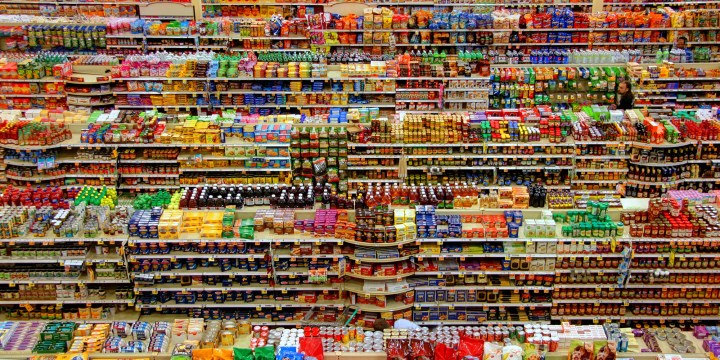SUPERMAKET SUPERSIZE ME
Shoppers have little idea about serving sizes – and manufacturers are not helping, UK survey finds

The study highlights not only a lack of understanding and conformity of serving sizes, but that cluelessness is driving consumers to pour even stiffer drinks.
Food packaging guidance on portion sizes is inconsistent, unrealistic and confusing, which makes it difficult for the public to understand how much sugar, fat, salt and alcohol they are consuming, warns a leading consumer advocacy group.
For this reason, consumers are inadvertently supersizing their portions, which is contributing towards a growing obesity problem.
A survey by the UK’s Which? among 1,265 respondents on portion sizes found many consumers were wrong in their estimates of portion sizes of popular foods sold in British supermarkets.
Concerningly, wine drinkers had no clue about serving sizes, with 49% pouring more than the recommended 125ml, with the largest pour recorded more than double that, at 275ml.
Red wine drinkers were most likely to be heavy-handed in their pourings, with almost two-thirds (62%) pouring more than the recommended 125ml – with the largest pour recorded reaching 250ml, which is a third of a bottle.
Orange juice drinkers don’t fare much better: more than half (54%) poured more than the recommended 150ml, with the largest pour being 400ml.
A 150ml glass of orange juice has around 259kJ and 13g of sugar, while a 400ml glass has 695kJ and 35g of sugar in it – more free sugar than an adult should have in a day.
The average adult man needs between 6,720kJ–10,080kJ daily, while women require 8400kJ–12600kJ, depending on various factors such as age, levels of activity, weight and so on, explains Roxanne Gieske from Food Allergy Consulting and Testing Services in Stellenbosch.
“In reality, however, most individuals would require the lower end and even less for weight loss.”
The World Health Organisation recommends that simple sugars should comprise no more than 10% of daily energy intake, with a reduction of simple sugars to less than 5% of total daily energy intake providing health benefits, which is about six teaspoons per day.
Crunch time
Larger portions and packs, which appear to be of better value, can also be problematic, the researchers said, as bigger portions encourage people to eat more due to “unit bias”, which is the tendency to think a serving or pack is one portion, regardless of its size.
Most people (79%) surveyed thought a supermarket meal deal was designed to be the ideal portion size for one person, but while a sandwich typically included in a meal deal is usually for one person, the drink and snack served alongside it may be designed for two – for example, a 300ml bottle of orange juice usually states it is enough for two portions.
About half of the respondents thought a 225g packet of halloumi served between two to four, when the packaging information suggests it should feed seven.
More than a third of respondents believed a tub of Pringles crisps contained two to four portions, when the packaging says it contains six to seven servings (of around 13 crisps per person).
The same applied to Cadbury’s Dairy Milk chocolate – a 33.5g bar (1 serving); a 110g bar (serving is 6 chunks = 27.5g); 180g bar (serving is 4 chunks = 20g); and 360g bar (serving is 5 chunks = 30g).
Which? says although “traffic light labelling” – which indicates the levels of fat, sugar, saturates and salt commonly contained in processed food – is a useful guide to the nutritional value, for it to be effective it must be based on realistic portion sizes.
Manufacturers and supermarkets should look to make improvements and provide clearer labelling on serving sizes so that shoppers are not misled about the food they buy.
Which? nutritionist Shefalee Loth explains they found consumers to be confused by inconsistent and unrealistic serving sizes and that the way manufacturers provide these can sometimes make it difficult to assess just how healthy a product is.
“Nutrition labelling is really valuable for consumers, including front-of-pack traffic light labelling, but it needs to be based on meaningful and consistent portion sizes.”
No clue
Gieske says consumers don’t read labels and don’t understand the concept of serving size.
“In South Africa, where (current) regulations define it as what’s typically consumed by most people, it says that it has to be appropriate in order to not supersize eating. Serving size is determined by the manufacturer, as long as it is nutritionally appropriate. This is why it’s varied across different products and different brands.”
Public comment on South Africa’s Regulations Relating to the Labelling and Advertising of Foodstuffs has now closed. Earlier versions of the regulations contained guidance on serving sizes, in line with Health Canada’s advice on maximum serving sizes for prepackaged foods, but in the final version of the regulations, there is no mention of serving size.
This is problematic, says Gieske, because many manufacturers simply do not know what appropriate serving sizes should look like.
“I also like the US model, which has made it mandatory to put in household measures, unlike in South Africa, where manufacturers just need to say the grams. That’s where consumers also get confused, because how much is 40g of cereal? What does that mean for them?”
Stipulating grammage on a label is not likely to encourage a consumer to weigh their food to determine the appropriate serving size.
But if a manufacturer says “one cup”, or “half a packet”, consumers are likely to have a far better idea of what is appropriate. BM



















Comments - Please login in order to comment.